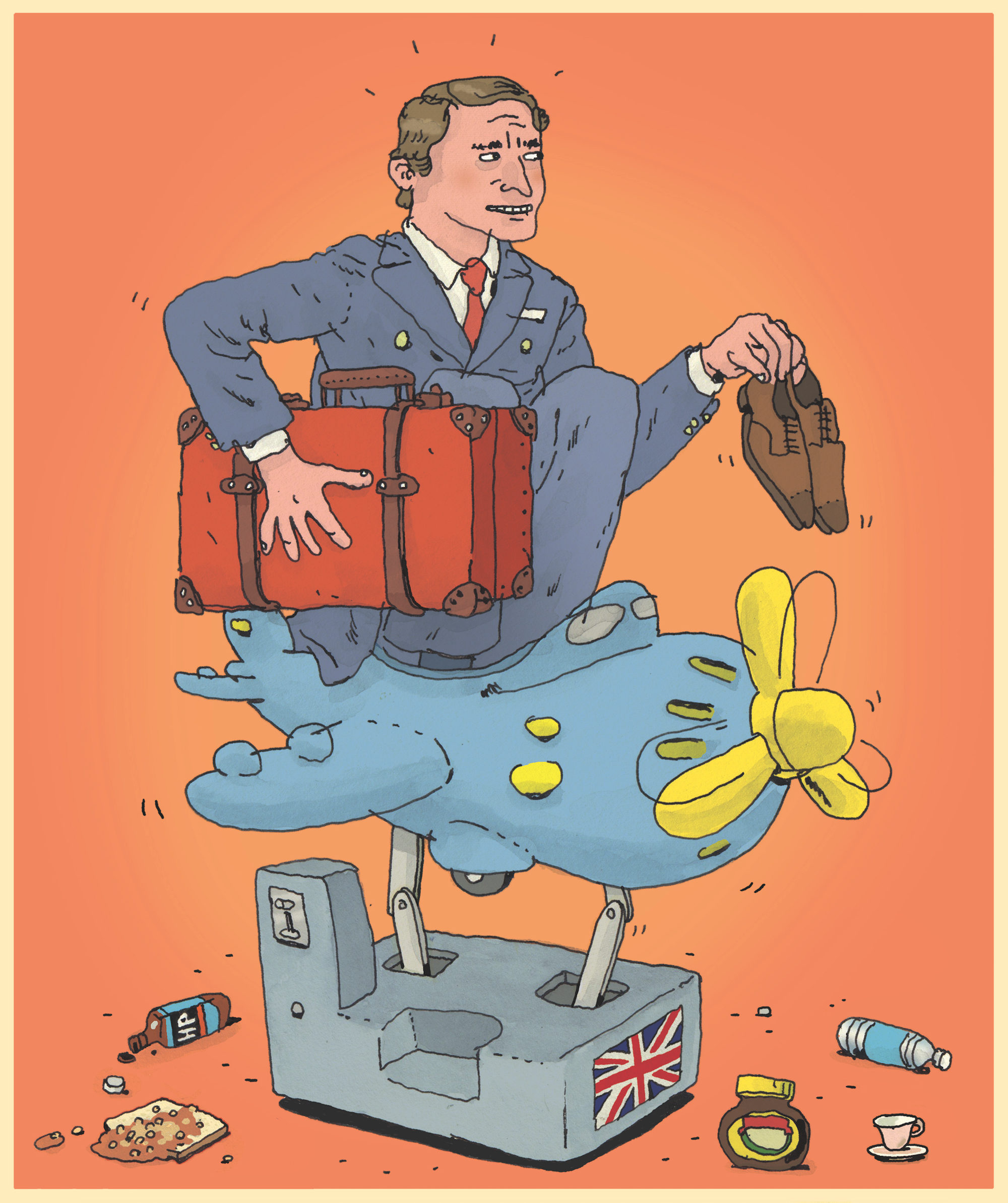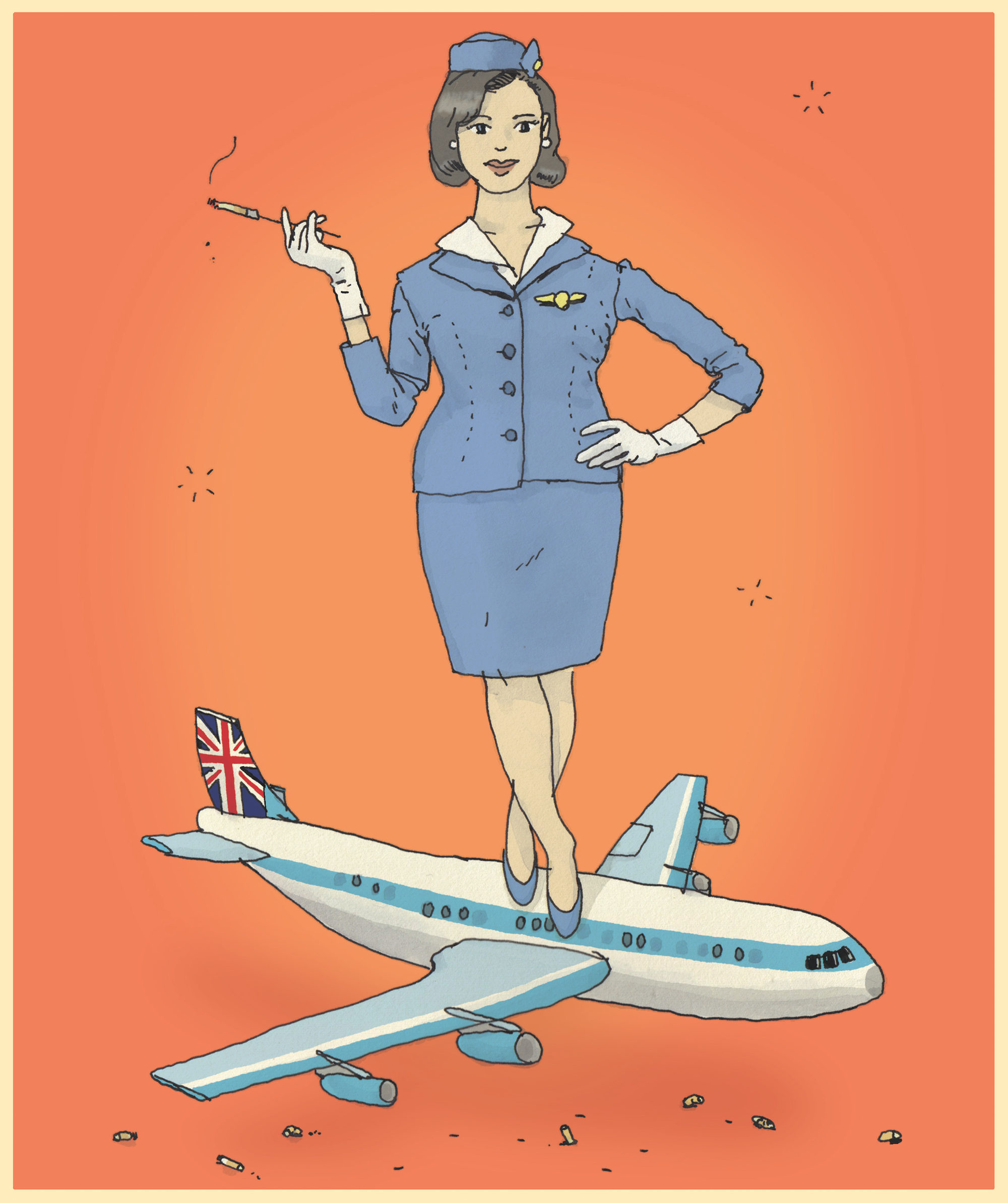Ever since man first looked to the skies, he dreamed of flight. He dreamed of liberation from what the poet John Magee called “the surly bonds of earth”—of steering into the air itself and larking among the birds.
“Caelum certe patet, ibimus illi” is the motto from the Roman poet Ovid emblazoned on the side of a balloon that took off from London’s Vauxhall Pleasure Gardens in 1836 with the hope of crossing the English Channel: “Surely the sky lies open: let us go that way!”
So, after Icarus, after Leonardo da Vinci and his designs for flying machines, after Montgolfier, Nadar, Kittyhawk, the Hindenburg, the Spitfire, and the Concorde … how did all that work out for us?
Not, I’m afraid, quite as planned. Did the early dreamers ever envision it would come to this? That taking to the air would begin, as it routinely does for very many of us, with a migraine-inducing three-hour trawl through the websites of half a dozen budget airlines and a bright, flashing maze of price-comparison websites?
You’ll be familiar with the scene: 48 tabs open on your internet browser as you try to establish whether the 5:25 a.m. flight from dismal Stansted is better value than the 6:40 a.m. flight from doleful Luton (the Englishman’s LaGuardia.) You judge whether “Super Premium,” with its bigger luggage allowance, is better value than “Happy Traveller,” for which you must either cram a two-week family holiday into a single rucksack, or get hit with a hefty fee when it turns out your cheeky paperback romance novel has pushed you a few ounces over the weight limit. Should you fork out extra cash for an assigned seat so you can sit with your children? Or anticipate an oversold flight, hoping that, “accidentally,” you won’t have to.
This, my friends, is mere foreplay. Next comes the business of getting to the airport at an ungodly hour of the morning, trundling miles from the longstay car park in an unhygienic shuttle bus to the airport terminal, with its snaking queues and perennially dysfunctional self-check-in machines, its zombie hordes of disenchanted travelers, and its regular Tannoy announcements of delays and cancellations, which only momentarily steal your attention away from the still-intoxicated stag party downing four pints of Budweiser by breakfast.
But, wait! The best is yet to come, starting with an extended, sweaty wait to pass through security— designed specifically so that you can remove shoes and belts as if you’re on suicide watch in a high-security prison. Of course, your travel shampoo and shaving foam are slightly larger than regulation size, and must be confiscated (which prompts a mild panic attack, given that in all likelihood the full-sized grooming products in your checked luggage will be arriving in Malaysia six hours after you step onto the tarmac at Magaluf).
And for what? Do you emerge airside to a bright new future—all light and space and 21st-century luxury? On the contrary. You trudge the miles down a broken travelator to a monstrous human crush at the departure gate, before being rammed into cattle class, cabin temperature set to frigid igloo, with your knees jammed into the hard plastic seat in front you (which reclines immediately upon takeoff), and your shoulder congealing against the bare arms of your bulging neighbor, who has decided to colonize the entire armrest. At least, once the bus is in the air, you’ll get some sustenance. Or rather, no change for a half-frozen (is that cheese?) sandwich and a warm gin and tonic which you inevitably spill on your lap, trying to decant its spirit from a miniature plastic bottle. Meal deal? Oh, go on then…


